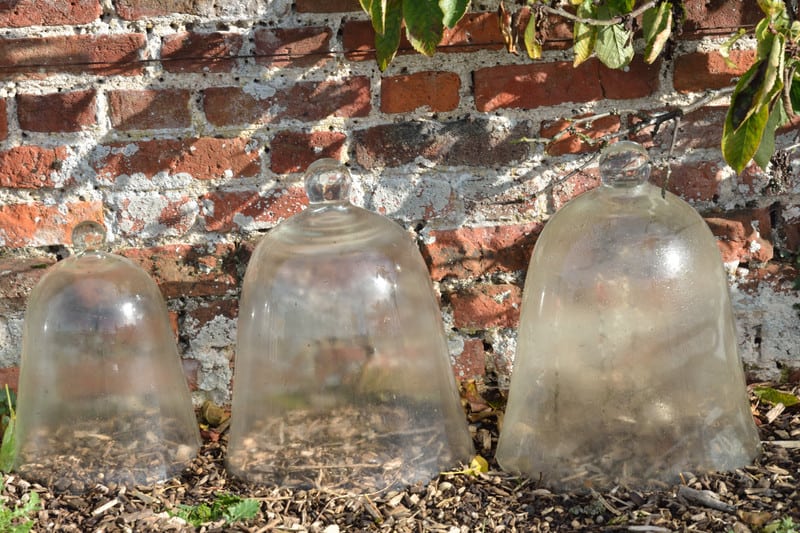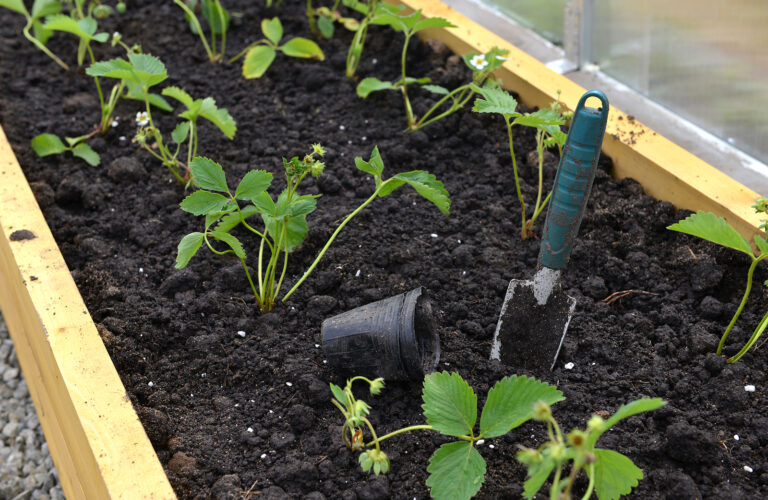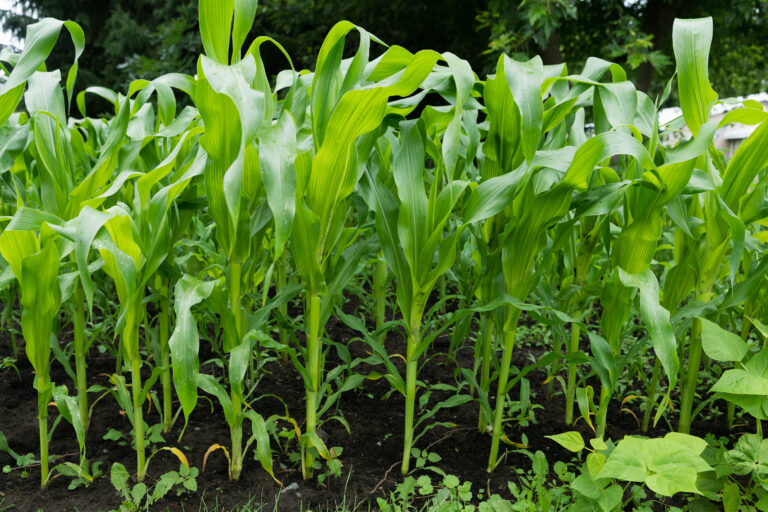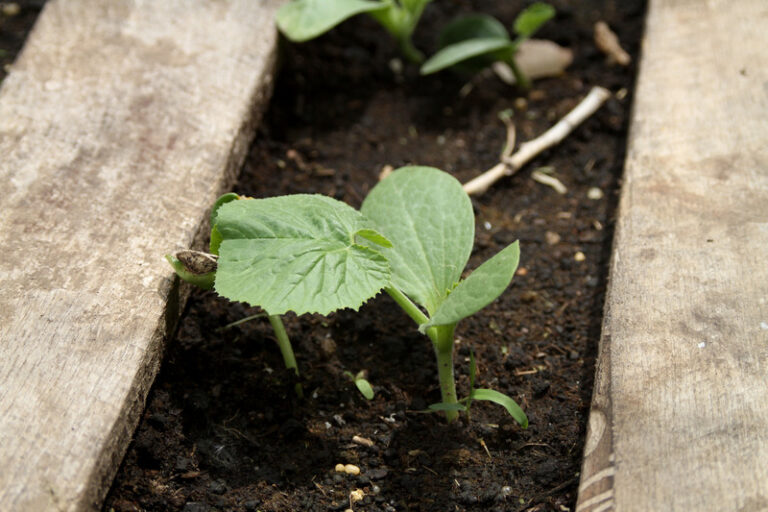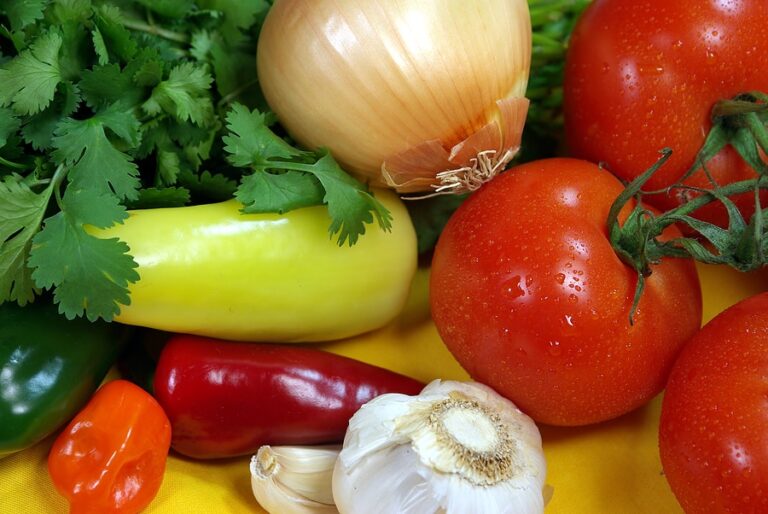Cloches and Hot Caps

Cloches and hot caps can be used to protect individual plants or a few plants at a time. A cloche or hot cap used at the beginning or end of the growing season when there are big swings in the daytime and nighttime temperature can add 3 to 4 weeks to the growing season.
A cloche or hot cap is any cover placed over plants or seeds that lets the sunlight in and protects the plant or seed from cold or bad weather.
Visit the Winter Garden and Season Extension Learning Hub
Set cloches and hot caps over plants when it is cold and lift them off when the weather is warm. The temperature inside a cloche or hot cap will be 2 to 5 degrees warmer than the outside temperature; that is enough to protect a plant from an early or late frost. Cloches and hot caps can also protect fragile plants from wind and heavy rains.
There are all kinds of cloches and hot caps; many can be simply made from materials you find around the house—plastic jugs or plastic sheeting is most common. Commercial cloches are made of glass or heavy translucent plastic including hard plastics such as Plexiglass and fiberglass and soft plastics such as polyethylene, mylar, and Lortex. Use heavy plastic for long life; use soft plastic when you plan to move the cover often.
A word of warning: cloches and hot caps—especially those made of plastic and glass—heat up quickly on warm, sunny days. The temperature under a cover can quickly grow too hot for plants. Lifting cloches off of plants or ventilating a cloche is very important when temperatures rise. The temperature around a plant can be harmful and fatal if the temperature rises 10 degrees or more above the maximum temperature for that specific crop. The smaller the cloche the faster the temperature will warm up inside. Don’t leave cloches in place over plants on sunny or mild days.
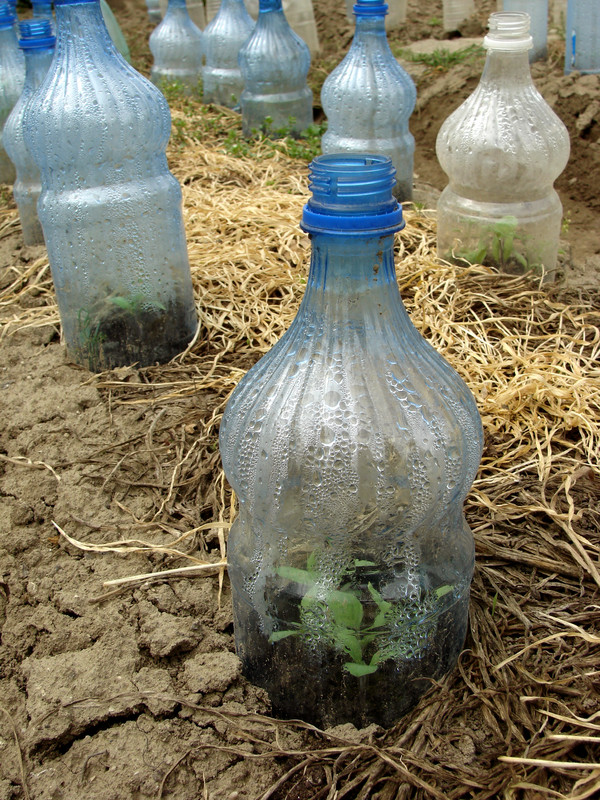
Easy to Use and Make Cloches
• Glass cloches. Old fashioned cloches are simple bell-shaped jars in varying sizes that can protect individual plants. Bell jars are easily portable. Modern cloches are often made from two panes of glass or two sheets of heavy translucent plastic held together with plastic or metal clips or notebook rings in an A-frame structure. You can also make an A-frame cloche from old sash windows hinged or from polyethylene plastic stapled or nailed to a frame. A-frame cloches can be lined up to protect a row of plants—place a pane of glass or sheet of plastic at either end to enclose the structure.
• Plastic jugs. Cut the bottom out of a plastic milk jug or water jug to make a homemade cloche or mini-greenhouse. Unscrew the cap to allow ventilation when the outdoor temperature is 32°F or warmer. A plastic jug cloche with top ventilation can be left in place for weeks; bury the bottom of the jug in soil or add loose mulch up around the sides of the jug for extra protection.
• Protective cylinders. Make a cylinder or box out of wire mesh or construction wire and wrap it with polyethylene plastic sheeting (use 4, 6, or 8 mil sheeting). A tomato cage wrapped in plastic sheeting makes a good protective cylinder for tall plants. A protective cylinder can also be made out of bendable fiberglass. Place a sheet of plastic over the top and create vents along the side of the cylinder if you plan to leave it in place for very long.
• Hot cap or hot tent. Make a hot cap or hot tent out of heavy-wax-paper or soft plastic cones or sheeting. You can use PVC or irrigation tubing or heavy wire wickets to fashion a hoop frame then drape plastic over the frame. Set half hoops 1 to 3 feet apart and then stretch clear polyethylene over them to form a tunnel or greenhouse. You can also stretch clear plastic sheeting over parallel boards set over a seedbed, over four stakes set around a plant, or stretch plastic sheeting over construction wire set in an arc over a seed bed or planting bed. Fiberglass panels can be arched over a row of plants also.
More helpful articles on Plant Protection:
Plastic Tunnels for Growing Vegetables

